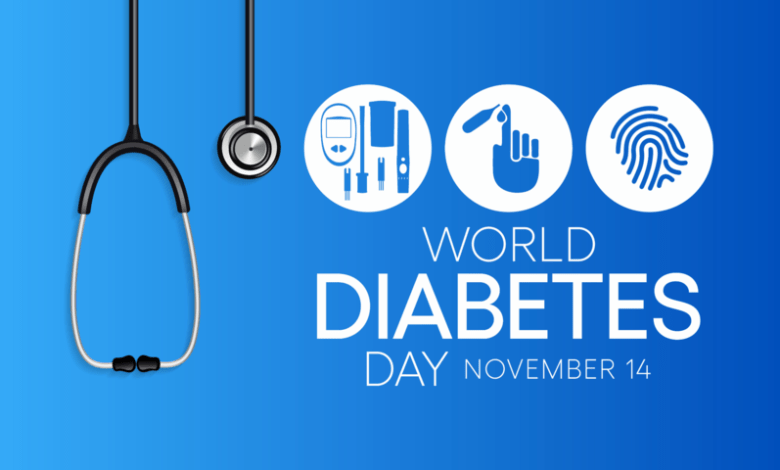
The world will be celebrating Diabetes Day on November 14 under the slogan, “Breaking Barriers, Bridging Gaps,” to raise awareness and educate people about the nature of the disease and how to deal with it.
In a statement to KUNA, Dr. Yousef Bu-Abbas, a consultant of endocrinology, diabetes and metabolism at Al-Amiri Hospital, said that diabetes is a chronic disease that affects millions, and Kuwait is one of the countries with the highest rates of type-ll diabetes.

According to statistics, the rate of getting type-ll diabetes has reached 25.5 percent, and about 90 percent of them are linked to obesity.
Dr. Bu-Abbas said that the increase in obesity among children, which has reached 50 percent according to ministry reports, has led to an increase of type-2 diabetes among adolescents between the ages of 14-18.
He stressed that type Il diabetes at this early age is violent and can include damage to the eyes, kidneys, heart, arteries and nerves compared to those who get type-ll diabetes after the age of 50.
Consultant of endocrinology and pediatric obesity at Al-Sabah Hospital Dr. Zaidan Al-Mazidi, spoke to KUNA about type-I diabetes which affects children, saying that it is a chronic disease that occurs when the pancreas does not produce enough insulin or stops producing it completely.
Insulin is the hormone responsible for regulating blood sugar levels, they can rise excessively in the blood leading to serious complications without it, type-l diabetes often appears in children and adolescents and may require careful management throughout life.

He said that symptoms develop quickly over several weeks, including excessive thirst, frequent urination, excessive hunger, unexplained weight loss, fatigue, tiredness, blurred vision, irritability, mood swings and recurring infections.
Type-l diabetes is diagnosed through various blood tests to determine the sugar level and evaluate the function of the pancreas, including a random and fasting blood glucose test, a glycated hemoglobin test, and an autoantibody test to determine the presence of antibodies that attack pancreatic cells.
Al-Mazidi explained that treating type-l diabetes requires careful monitoring of blood sugar levels using a glucose meter, with regular doses of insulin given by injection or an insulin pump, proper nutrition from a balanced healthy diet and regular physical activity.
However, Endocrinology and Internal Medicine Consultant Dr. Amna Shaghouli told KUNA that type-Ill diabetes, which is gestational diabetes, occurs only during pregnancy and goes away completely after birth.

She explained that it is important because high sugar levels may lead to problems during pregnancy and the birth process, gestational diabetes occurs because of hormonal and genetic changes and the body’s response to insulin during pregnancy.
According to recent studies, the placenta secretes a group of hormones, such as human placental lactogen and cortisol, that help the fetus grow but also increase the body’s resistance to insulin, making it difficult for the body to control sugar levels.
Insulin resistance naturally increases during pregnancy, especially with women who have a history or family history of diabetes or are overweight, which leads to the body not responding efficiently to insulin.
Treatment methods include healthy eating and appropriate exercise, and if sugar levels remain high then insulin treatment is required until the time of delivery, if a woman has previously suffered from gestational diabetes, she is at greater risk of developing type-ll diabetes.
Source: KUNA













